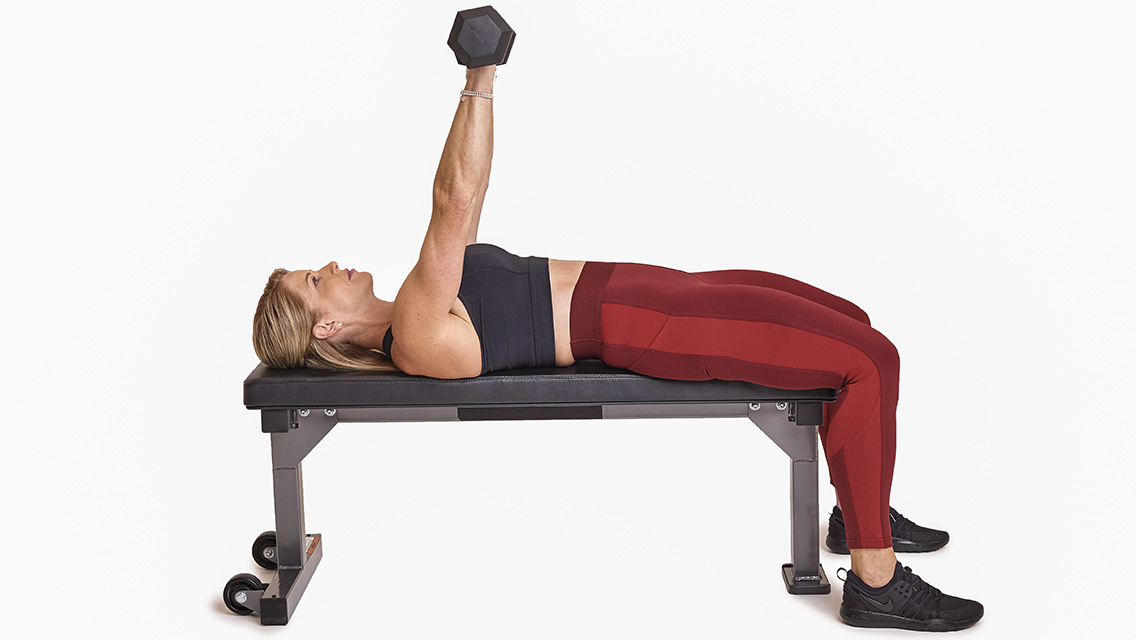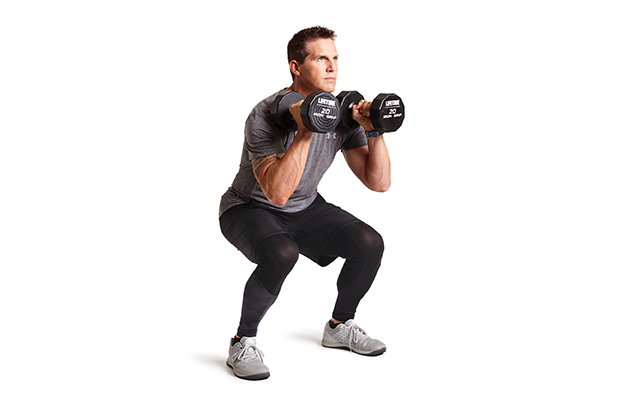The coronavirus pandemic threw wrenches into nearly every aspect of our lives this year, including many fitness routines. Personally, my lifting-heavy gym regimen was put on pause indefinitely.
Instead of strength training, I walked. I ran. I swung my kettlebell. I toyed with regular HIIT workouts for the first time in years, thanks to body-weight boot camps that I could stream in the comfort of my own home. My favorite Zumba instructor moved her classes online too, giving me the opportunity to dance in my backyard.
After about three months of this cardio-heavy routine, I had the opportunity to take at least some of my training back into a gym — in this case, my brother-in-law’s garage, which he had outfitted with a squat rack, bench, barbells, dumbbells, and a cable tower.
The space had everything I needed to resume weight training in a way that felt controlled and comfortable. I was ready to jump back into my old program — but my trainer had other plans.
He devised a new three-day program that leaned heavily on rebuilding consistency and confidence in lifting, as well as overall strength. One of the ways he did this was through high-volume workouts based on ladders.
In a ladder workout, the rep scheme is designed to ascend or descend with each set, while the load stays constant. For example, in an ascending ladder you might do one squat, then rest, then two squats, rest, three squats, rest, and so on up to, say, 10 reps. In a descending ladder, you might start with 10 reps and decrease by one in each set.
You can certainly increase or decrease by one rep at a time, but you can also adjust the reps in increments of two, or three, or five. You can go up to (or come down from) 10, 20, 50 — whatever suits your fancy and the exercise.
A ladder workout can also include more than one movement. Ladder the reps of one exercise while holding the counts for your other exercises steady. Or you can pair two or more exercises, increasing the reps of one while decreasing the reps of the other. For example, you might do 10 bench presses and one pushup in set one, then nine and two, then eight and three, until you get to one bench press and 10 pushups.
Ladder variations are almost endless and can be adapted to any strength move. The ladder you choose will ideally match your energy, time, strength, and overall skill and fitness level.
You might look at this and, like me, think, Fun! You might also look at this and wonder, Why go to the trouble?
One benefit of doing a ladder workout is that you can build a tremendous amount of volume, often in a short amount of time, without brutalizing your body by maxing out or failing reps. It’s also a great way to work with a limited amount of equipment at home (or limit how much equipment you have to touch in a fitness space) because you aren’t changing weights from set to set.
Another benefit is what I think of as “mindset magic.” Ascending and descending rep counts offer a distraction and even a bit of excitement as you move through the ups and downs of a workout.
Want to try a ladder workout? You can always talk to a trainer or coach, or search online, for ideas. You can also take any of the earlier suggestions or build your own. Keep the following tips in mind as you go:
- Be conservative with your reps when starting out. One to 10, or 10 to one, increasing or decreasing by one rep at a time, is a safe place to start and get your “ladder legs,” so to speak.
- Be mindful of load. Remember, you’re keeping the same weight per exercise throughout the ladder, so pick something you can stick with for even the highest-rep sets.
- Focus on form. High volume is not an excuse to compromise form. If anything, the high rep counts are an opportunity to really hone your mechanics. Make each rep matter by keeping it clean.
- Tailor your rest breaks in order to go into the next set with gusto and great-for-you form without wasting time. A good guideline is to rest for as many breaths as the number of reps you just did.
Advanced Ladder Workout
Perform all reps of one exercise before moving on to the next. Choose weight or difficulty based on what you can maintain for the duration of the sets of each exercise. Focus on great form in each rep and make sure to rest as needed between sets. Try to complete each set unbroken.
I. Pull-ups (or Lat Pulldown)
Complete 1, 2, 3, 4, . . . 10 reps, resting as needed between each set.
THEN
II. Dips (or Triceps Extension)
Complete 2, 4, 6, 8, . . . 10 reps, resting as needed between each set.
THEN
III. Pushups (modified as needed)
Complete 3, 6, 9, 12, . . . 30 reps, resting as needed between each set.
THEN
IV. Goblet Squat (or unweighted)
Complete 4, 8, 12, 16, . . . 40, and rest.
This originally appeared as “Ups and Downs” in the November 2020 print issue of Experience Life.




This Post Has 0 Comments